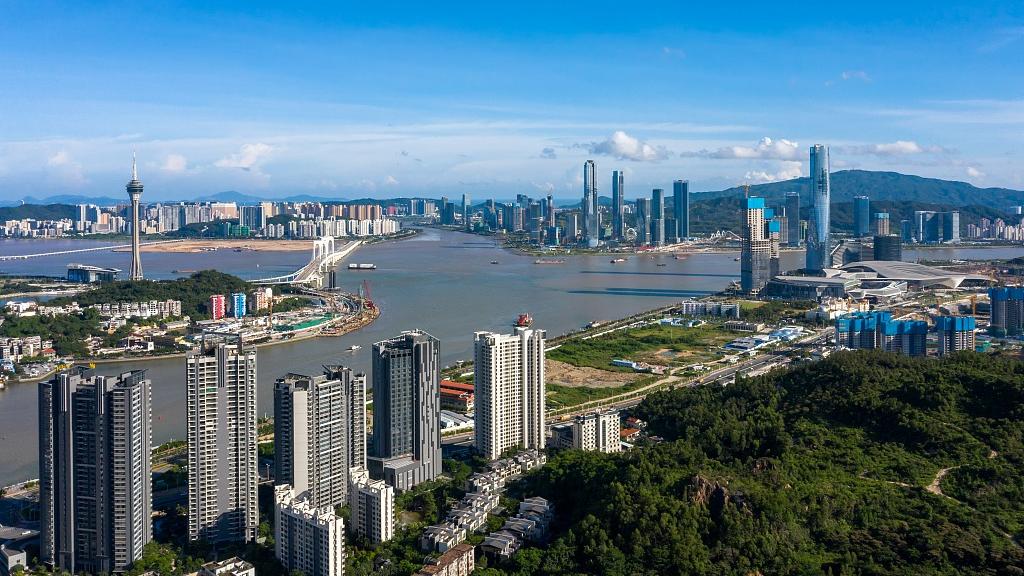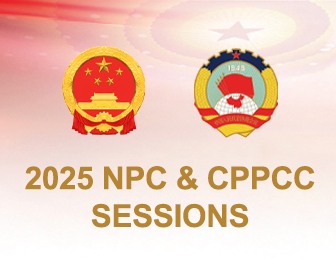 An aerial photo of the Guangdong-Hong Kong-Macao Greater Bay Area on Aug 23, 2021. (PHOTO / VCG)
An aerial photo of the Guangdong-Hong Kong-Macao Greater Bay Area on Aug 23, 2021. (PHOTO / VCG)
HONG KONG – The air quality in the Pearl River Delta region has continued to improve, with the average annual concentration of respirable suspended particulates dropping by 52 percent since 2006, according to an annual government report released on Monday.
The report, jointly released by Guangdong and the Hong Kong and Macao special administrative regions, showed that levels of sulphur dioxide (SO2) nitrogen dioxide (NO2) also decreased in 2022 by 86 percent and 45 percent, respectively, when compared to 2006.
Compared with 2015, the average annual concentration levels of carbon monoxide (CO) and fine suspended particulates dropped last year by 16 percent and 38 percent, respectively, according to the report released under the Guangdong-Hong Kong-Macao Pearl River Delta Regional Air Quality Monitoring Network.
On the other hand, the 2022 average annual concentration level of ozone (O3) increased by 39 percent when compared with that in 2006, indicating that further alleviation of the regional photochemical pollution is required
On the other hand, the 2022 average annual concentration level of ozone (O3) increased by 39 percent when compared with that in 2006, indicating that further alleviation of the regional photochemical pollution is required, the report added.
To further improve regional air quality, the HKSAR government and the Guangdong provincial government have long been committed to reducing emissions of air pollutants from major emission sources.
ALSO READ: HK sees improved air quality in 2022
The two governments completed a study on post-2020 regional air pollutant emission reduction targets and concentration levels, setting the direction for collaboration in addressing ozone issues, according to an HKSAR government statement.
There is also an ongoing study on "Characterisation of Photochemical Ozone Formation, Regional and Super-Regional Transportation in the Greater Bay Area" which aims to understand the origins of ozone precursors and ozone formation mechanisms in the GBA to provide a scientific basis for formulating ozone control strategies.
On monitoring, the governments of Guangdong, Hong Kong and Macao are exploring the incorporation of routine volatile organic compounds (VOCs) monitoring into the regional air quality monitoring network, according to the statement.
The HKSAR government is also actively preparing to set up a supersite for GBA air quality laboratory and meteorology monitoring in Hong Kong to provide regional air pollution and meteorological monitoring and forecasting services, it added.
READ MORE: Hong Kong air quality improves in 2020
The HKSAR government has implemented various air pollutant emission control measures on marine and land transport, power plants and non-road mobile machinery to enhance air quality.
It announced in 2021 the Hong Kong Roadmap on Popularisation of Electric Vehicles, the Clean Air Plan for Hong Kong 2035 and Hong Kong's Climate Action Plan 2050, setting out a variety of measures to achieve zero vehicular emissions and carbon neutrality in Hong Kong before 2050.
The HKSAR government is also preparing an amendment to its laws to tighten the VOC content limits of 22 types of regulated architectural paints and to extend the VOC control to cleaning products.



